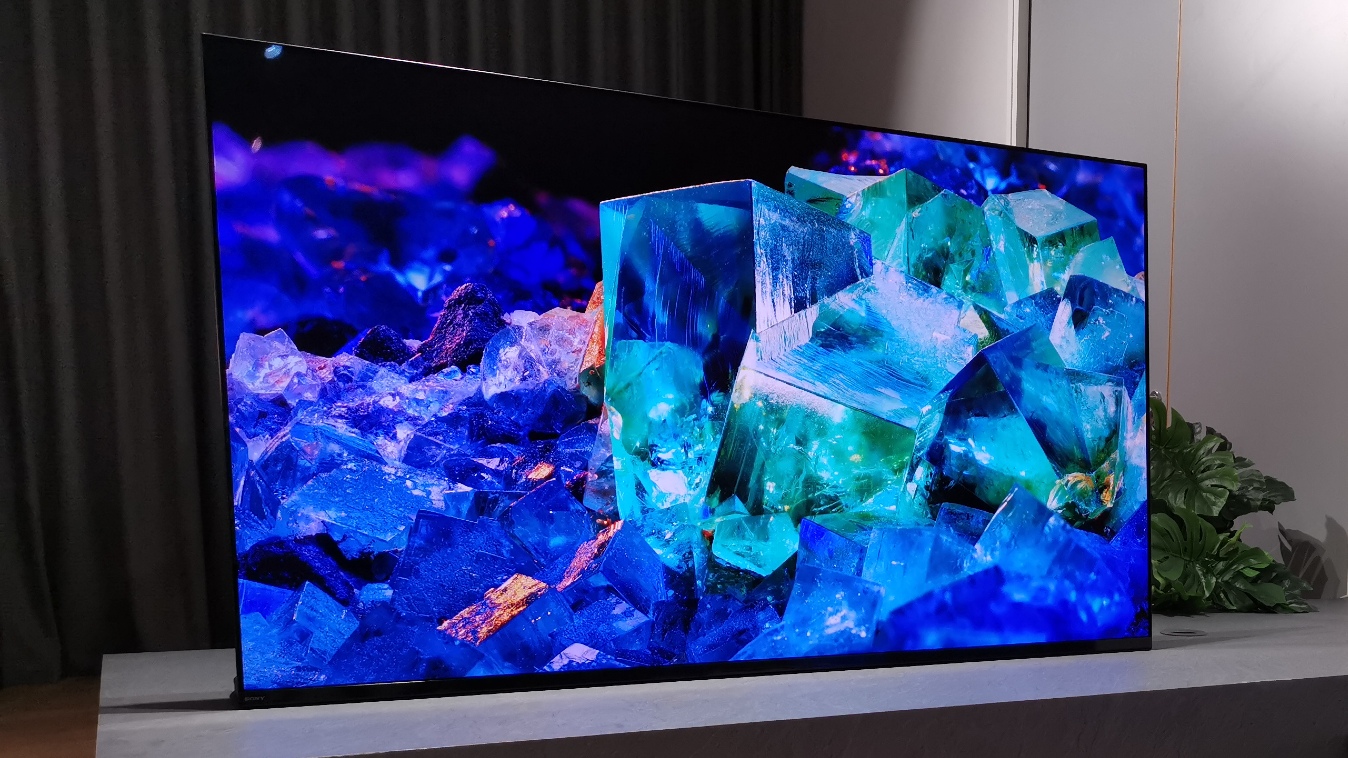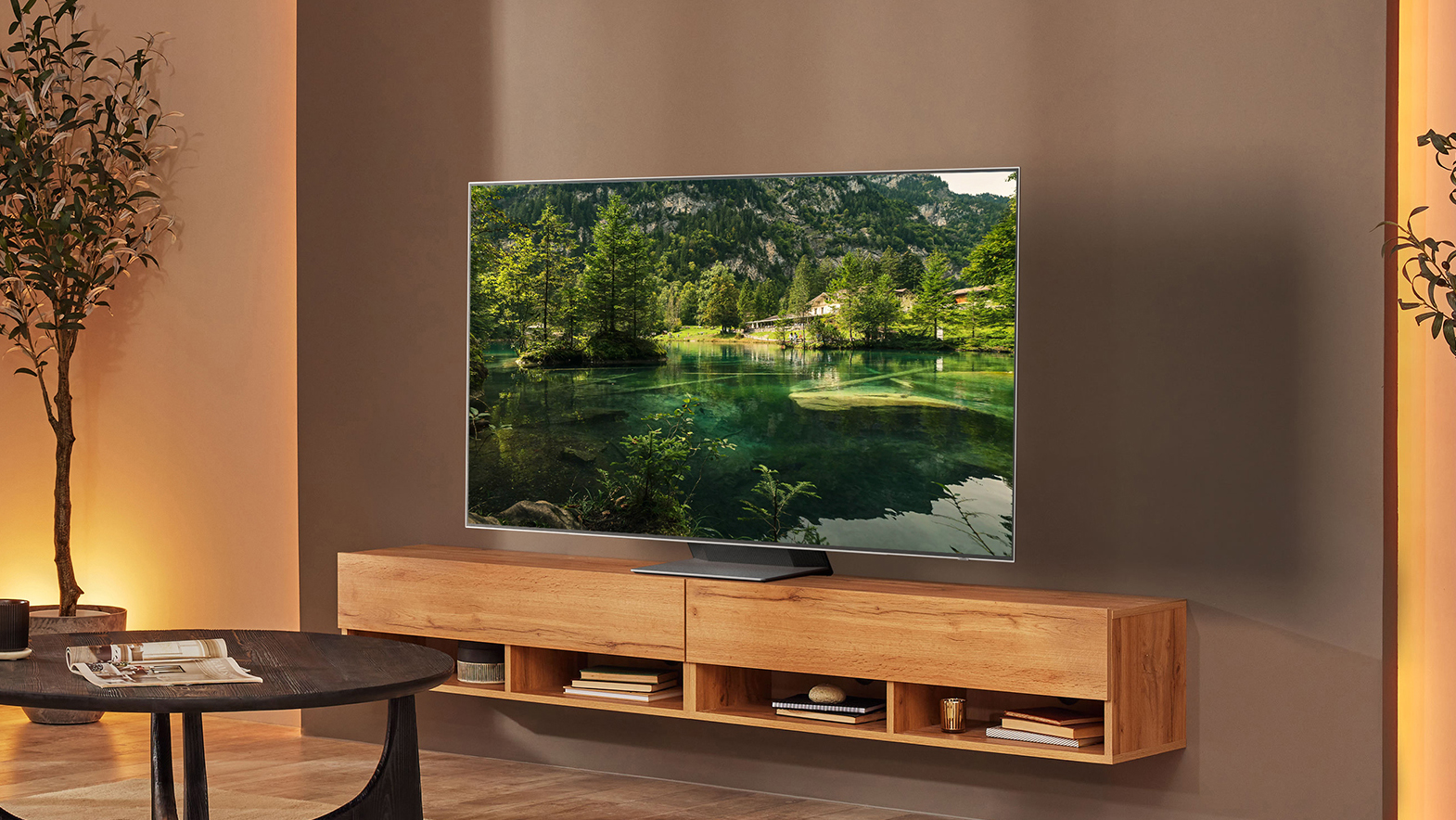Even the awesome Sony A95K 4K TV can't escape QD-OLED's 'big' problem
The people demand larger TVs

Having been blown away a few weeks back by the first Quantum Dot OLED TV to come through our doors, the Samsung S95B, we’ve now completed our review of its only direct competition, the Sony A95K. And we’ve come away from Sony’s model feeling even more impressed.
In fact, thanks in particular to the astonishing color performance QD-OLED makes possible, the A95K might just deliver the best picture quality we’ve ever seen from a consumer television. Despite this groundbreaking performance, though, a lot of hardcore AV fans won’t yet buy a QD-OLED TV. At least as their main TV.
We don’t say this because of their cost; while Sony’s QD-OLED sets certainly cost more than its regular OLED and LCD TVs, they’re not insanely expensive for a brand-new screen technology in its first year. And Samsung is actually already selling its QD-OLED sets for pretty much the same price as the best OLED TVs with regular OLED panels – and the price is significantly less than it’s selling some of its own premium mini-LED TVs.
No. The reason lots of AV fans won’t look at a QD-OLED TV yet no matter how awesome they are is that they’re simply not big enough.
Both Sony’s A95K and Samsung’s S95B Quantum Dot OLED ranges are only available in 55 and 65-inch screen sizes. Make no mistake they're among the best 55-inch TVs and best 65-inch TVs you can buy, but… that's it.
That’s better, I guess, than this new technology only launching with a single screen size, as we’ve seen with some previous TV tech launches. But the continual move towards bigger and bigger TVs, especially among the sort of serious home theater fans who are most likely to spend relatively more on their next TV, means that topping out at 65 inches just doesn’t cut it these days.
Screen size is, of course, directly related to the immersiveness of a home theater experience. This is the main reason why, after all, going to a movie theater remains so enduringly popular. What’s more, the sort of picture quality we can get at home now thanks to new picture technologies such as 4K and high dynamic range not only holds up much better on big screens, but arguably needs the biggest screens possible to maximize its potential.
Sign up for breaking news, reviews, opinion, top tech deals, and more.
It doesn’t help that QD-OLED’s size problem has been brutally exposed this year by the arrival of regular OLED TVs at up to 97 inches, in the case of the LG G2. Plus, of course, 75-inch and bigger LCD TVs have long been commonplace and can now be had for well under $1,000 / £1,000.
Thanks to all this, the time I spent with both the Samsung S95B and Sony A95K TVs was tinged with regret that no option existed to indulge a love of QD-OLED’s obvious quality at the sort of screen sizes some of us, at least, now want when we’re investing in a ‘hero’ main living room TV. The QD OLED TVs quite literally left us wanting more, with no way of meeting that desire.

While not having at least a 75 or 77-inch option to step up to is our main gripe with QD-OLED technology, having smaller screen options wouldn’t be a bad idea either. After all, video gaming is huge, and the likes of Sony, Philips and, especially, LG have enjoyed great success with relatively small OLED TVs that appeal directly to the gaming market, such as the 42-inch LG C2.
Samsung Display did, happily, show off a 77-inch Quantum Dot OLED screen in September. This obviously raises hopes that we might see a 77-inch screen size added to 2023's QD-OLED ranges – though we’ve yet to see any definitive supporting information to suggest that Samsung Display really is ready to ramp up a full and substantial 77-inch production run.
A likely explanation for there being so few QD-OLED screen sizes at the technology’s launch is the reported difficulties Samsung Display experienced when trying to get QD-OLED production to a point where successful manufacturing yields were high enough to make the new screen technology a realistic consumer proposition. The manufacturer likely had to limit the variety of screen sizes coming off its currently limited QD-OLED production lines to maximize efficiency.
There are reports out of Korea, too, suggesting that Samsung was waiting to see how big a consumer appetite there was for QD-OLED before making the decision to invest in hugely expensive extra production lines. Though having more screen sizes to choose from may well have led to substantially more sales…
I really hope the 77-inch screen does go into production, though. After all, 2023 will only see people's preferred screen sizes continue to grow, and we’d hate to see a cutting-edge picture technology as outstanding as Quantum Dot OLED start to fall behind the curve of the best TVs for such a basic reason before it’s had a chance to get off the ground.

John has been writing about home entertainment technology for more than two decades - an especially impressive feat considering he still claims to only be 35 years old (yeah, right). In that time he’s reviewed hundreds if not thousands of TVs, projectors and speakers, and spent frankly far too long sitting by himself in a dark room.